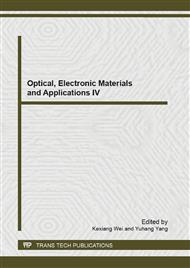p.311
p.317
p.322
p.331
p.336
p.341
p.345
p.352
p.357
Multi-Channel Stepping Motors Driven Based on SCM
Abstract:
Stepper motor is an electromechanical device, which converts electrical pulses into discrete mechanical movements, and it is used in varies kinds of automatic control system widely. This paper introduces a driver control system of multi-channel stepping motors based on SCM, the system can realizes the controlling of at most 16 motors with two groups of SCM I/O, and in the system, the motors can work with different rate and excitation manner through the piece selecting function of 74573.
Info:
Periodical:
Pages:
336-340
Citation:
Online since:
July 2013
Authors:
Keywords:
Price:
Сopyright:
© 2013 Trans Tech Publications Ltd. All Rights Reserved
Share:
Citation:


